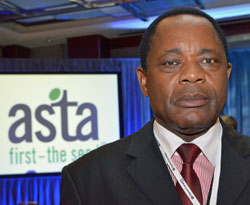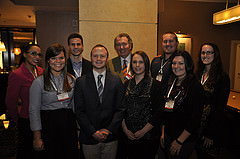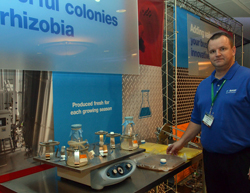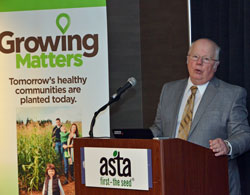 It was AFSTA meets ASTA last week at the CSS 2014 and Seed Expo in Chicago.
It was AFSTA meets ASTA last week at the CSS 2014 and Seed Expo in Chicago.
Denias Zaranyika is the Vice President of the African Seed Trade Association (AFSTA) and he attended last week’s event to see what he could bring home to his colleagues in the countries of Africa. “We want to exchange information and learn from Americans,” he said. “I’ve had meetings with our counterparts, the global players…and the meetings and presentations here are very informative.”
Zaranyika works for the African seed company Seed Co, based in Zimbabwe. “At the moment we are in 15 African countries,” he said. “Our mandate is to make sure that we produce seed that will feed Africa and beyond in the future.”
New hybrids are important to African farmers, he said, “most international seed companies are looking to Africa for food security in the future.” Zaranyika says Africa is still considering the use of biotech traits. “At the moment, people don’t know whether it’s right or wrong,” he said, adding that African farmers are working more right now on improving agronomic practices to increase yields.
I enjoyed my conversation with Denias, who extends an invitation for everyone in the American seed industry to attend the AFSTA annual meeting in Victoria Falls, March 2-5, 2015. Interview with Denias Zaranyika, AFSTA











